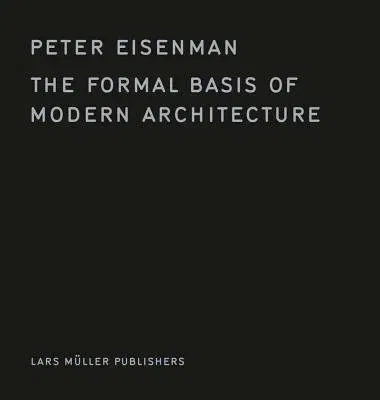First published in 2006 (and now rare), and originally written as a
dissertation in 1963, The Formal Basis of Modern Architecture is the
acclaimed American architect Peter Eisenman's masterly formal analysis
of architecture. I wanted to write an analytic work that related what I
had learned to see, from Palladio to Terragni, from Raphael to Guido
Reni, into some theoretical construct that would bear on modern
architecture, but from the point of view of a certain autonomy of form.
Here, Eisenman--world famous for his Holocaust Memorial in Berlin
(2005)--confronts historicism with theory and the analysis of form,
illustrating his observations with numerous precisely executed drawings.
The Formal Basis of Modern Architecture was Eisenman's dissertation at
the University of Cambridge, and was first published as a facsimile
edition by Lars Müller Publishers in 2006; that edition is now reprinted
in a smaller format.
Peter Eisenman (born 1932) is an internationally recognized
architect and educator. Prior to establishing a full-time architectural
practice in 1980, Eisenman worked as an independent architect, educator
and theorist. In 1967, he founded the Institute for Architecture and
Urban Studies (IAUS), an international think tank for architecture in
New York, and served as its director until 1982. Eisenman is a member of
the American Academy of Arts and Sciences and the American Academy of
Arts and Letters. Among other awards, in 2001 he received the Medal of
Honor from the New York Chapter of the American Institute of Architects,
and the Smithsonian Institution's 2001 Cooper-Hewitt National Design
Award in Architecture. He was awarded the Golden Lion for Lifetime
Achievement at the 2004 Venice Architecture Biennale.

